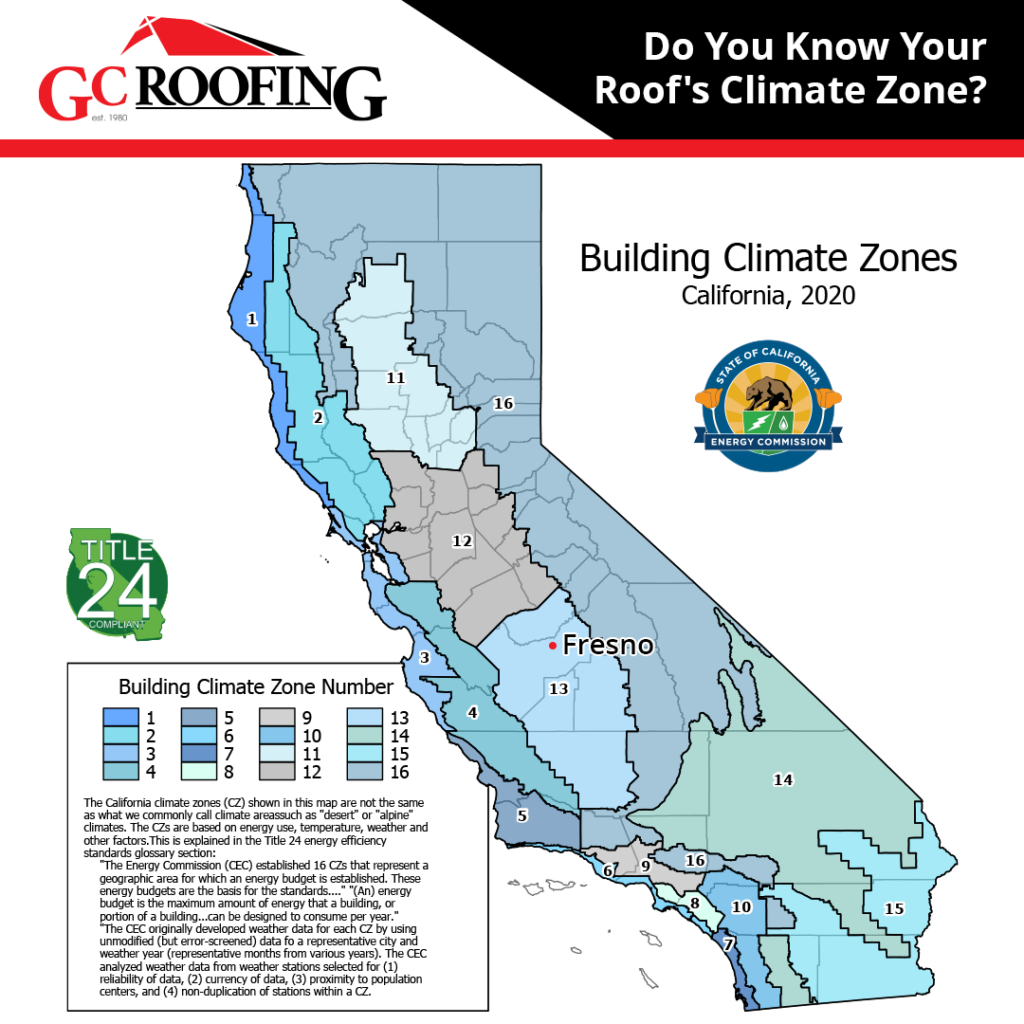Do You Know Your Roof’s Climate Zone?
Here at GC Roofing, we are proud to have had a voice at the table during the initial development of the California Energy Code in the 80s and 90s. As the years have passed, California’s progress in energy efficiency and reduced environmental impact is impressive. We are excited to see what our collective continued efforts will accomplish with the 2025 Energy Code. These updated standards and regulations were released in November of 2024. Over the course of 2025, California contractors, manufacturers, and building owners will be exploring how to meet the new standards and regulations that go into effect as of January 1, 2026.
These new standards and regulations result from years of public workshops, hearings, and input. The California Energy Commission (CEC) has been working on increasing energy use efficiency, reducing energy costs, and trying to keep up with growing electric demands. Every three years, the CEC updates the Energy Code, which the California Building Standards Commission publishes as part of the California Building Standards Code (known as Title 24 of the California Code of Regulations). The CEC’s efficiency standards for buildings and appliances have saved Californians more than $100 billion in avoided energy costs over the last 50 years. Thanks to efficiency measures, California — the U.S. state with the highest population and largest economy (almost $3.9 trillion GDP in 2023) — has the second-lowest per capita energy use in both the residential and commercial sectors.
The Energy Code governs the energy-saving features of newly constructed buildings, additions, and alterations to existing structures. The standards for 2025 are cost-effective and are estimated to provide over $4.8 billion in statewide energy cost savings over 30 years. Help us prepare your next project to meet the new codes. Local building departments start enforcing the 2025 Energy Code on January 1, 2026. These measures save energy and reduce energy bills, but also help Californians breathe easier and be more comfortable where they live and work. They are a critically important tool for advancing the state’s climate and energy goals.
Each standard was submitted to the California Building Standards Commission for approval. It is easy to see how these standards affect how all contractors carry out their jobs; what is more challenging is understanding how they impact buildings and homeowners. We are happy to help you navigate these new energy codes. Here are a few tips and tricks to get the ball rolling:
Do you know your roof’s climate zone?
When determining this impact, the first thing to know is what climate zone your property is located in. Here is a helpful link to determine what zone your property is located in.
California is divided into 16 climate zones, and the specific cool roof requirements vary depending on which zone a building is in. The zones help ensure that buildings are optimized for their local climate. For example, a building in a cooler coastal zone has different energy needs than one in a hotter inland zone. These criteria apply to all residential and commercial buildings. In zones 10-15, installing a cool roof with an SRI that meets or exceeds 16 is one of three options to demonstrate code compliance. Therefore, a cool roof is considered a ‘tradeoff’ option.
References:
California Energy Commission (2025) EZ Building Climate Zone Finder retrieved on February 27, 2025 from https://caenergy.maps.arcgis.com/apps/webappviewer/index.html?id=5cfefd9798214bea91cc4fddaa7e643f
California Energy Commission (2025) Energy Code Fact Sheet PDF retrieved on February 27, 2025 from https://www.energy.ca.gov/media/10394

